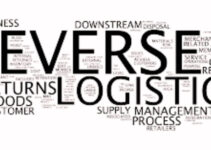The e-commerce logistical industry will reach 524.1 billion US dollars by the end of 2025. In order to attract the attention of customers and gain a competitive edge, sellers and online stores offer quick and easy returns to the customers. Customers return approximately 30% of the online products. Today, we’ll discuss Amazon reverse logistics process; its definition, steps involved, advantages, and disadvantages.
What is Amazon Reverse Logistics Process?
Amazon reverse logistics process is the method of flow of goods from the end consumer, suppliers, and warehouse to the manufacturer. It is one of the leading challenges and problems that online stores are facing. However, the significance of the reverse logistical method comes into play when customers want to return their goods.
Customers are unaware of the cost and the SCM elements involved in reverse management. The reverse logistical process of the company clearly removes the confusion on how the product would return to the company’s warehouse.
There are some categories of products and goods that customers can’t return on Amazon such as some healthcare and grocery items. Customers could drop off the other returnable products at the nearest dropping point, or the company’s logistics provider would pick them up at their doorsteps relevant to the convenience of customers.
Amazon Reverse Logistics Process – Steps
Some of the main steps involved in the Amazon reverse logistics process are as follows;
Return Process
The return process starts when the dissatisfied customers plan to return their goods to the company. It is a very difficult step when customers place and validate their return request to the company. However, it starts with recognizing the product conditions and authorizing the returns and comprises of considering the following options;
- Scheduling of returned shipment
- Refunds approval
- Replacing defective and faulty products
Managing Returns
Amazon wants to know the returned product category, and it guides the company to determine where the returned products should go and to what department. When the product reaches the pre-decided drop-off point like a centralized processing center; then it would carefully analyze the returned product category and organize them into the following;
- Repair
- Resell as a new product
- Resell as the returned product
- Refurbishing
- Recycling
Moving Returns
After organizing the returned goods into their relevant categories, the idea is to keep moving the returned goods to their respective location point for further processing like repairing, reselling, and recycling. If the company stores the returned items without processing them and employs the other alternative, then it is more harmful to the company.
Repair
When the product has gone through the reviewing stage and verified the criteria of repair, then the item moves to the repair unit to gain some value from it. If the product is irreparable, then the company would sell its working and functioning parts to avoid the loss that the company may incur.
Recycle
If the reviewing team confirms that the product is recyclable, then it moves to the recycling unit to reuse the product and gain some value out of it.
Advantages of Amazon RLP
Some of the main benefits and advantages of Amazon reverse logistics process are as follows;
Low Waste
The reverse logistical process helps Amazon to decrease waste by identifying various options like refurbishing, repairing, recycling, reusing, and disposing of the product in an environmentally friendly way. Efficiently decreasing waste helps the company to increase the customer retention ratio, profit margin, and customer satisfaction level by showing social and environmental responsibility. However, the growth in the e-commerce industry is increasing the e-commerce waste, and it requires smart solutions by employing reverse logistical methods.
Quick Turnaround
Amazon and other online stores need to reverse the logistical processes because it not only amplifies customer satisfaction levels but also the customer retention ratio. Customers usually check the return policy and methods before buying anything from a new brand. The complicated method would impact the purchasing decisions of the customers. Customers want a quick turnaround like returned picked up at their doorsteps, refurbished, or reused.
High Customer Satisfaction
How the company manages the reverse logistical process in SCM, impacts their views about the company. Amazon has made the reverse logistical method very easy and convenient by following the customer-centric reversal process. Mismatch or defective product is a very common problem in online stores; when it happens, then how convenient you make it for customers. Some of the options you can give are exchange, return, or speedy refund and offering other additional discounts for the inconvenience, they have a great impact on their satisfaction level.
Better Profit Margin
If the company properly deals with the reversal process, then it amplifies the company’s profitability. Options like reusing, reselling, and recycling amplify the profit margin of the company. The return process would cost the company the same as it does for the forward logistical method. It provides the company an opportunity to find out the reason for the return in the reversal process so that the company can avoid the frequency of returns.
Disadvantages of Amazon RLP
Some of the main challenges and disadvantages of Amazon reverse logistics process are as follows;
- Difficult to regulate and control the method of waste reduction
- Challenging to scale your operations to meet the increasing demands of customers
- Bridging the gap in customer knowledge is difficult
- Expectations of the customers are changing
- The authorization process of returned merchandise is not easy
- Complicated return order flow
Conclusion: Amazon Reverse Logistics Process
After an in-depth study of Amazon reverse logistics process; we have realized that the reverse logistical method is highly significant for the e-commerce platforms. If you are learning about the reverse logistical process of Amazon, then you should keep in mind the abovementioned elements, advantages, and disadvantages.
Ahsan is an accomplished researcher and has a deep insight in worldly life affairs. He goes Live 3 days a week on various social media platforms. Other than research writing, he’s a very interesting person.


